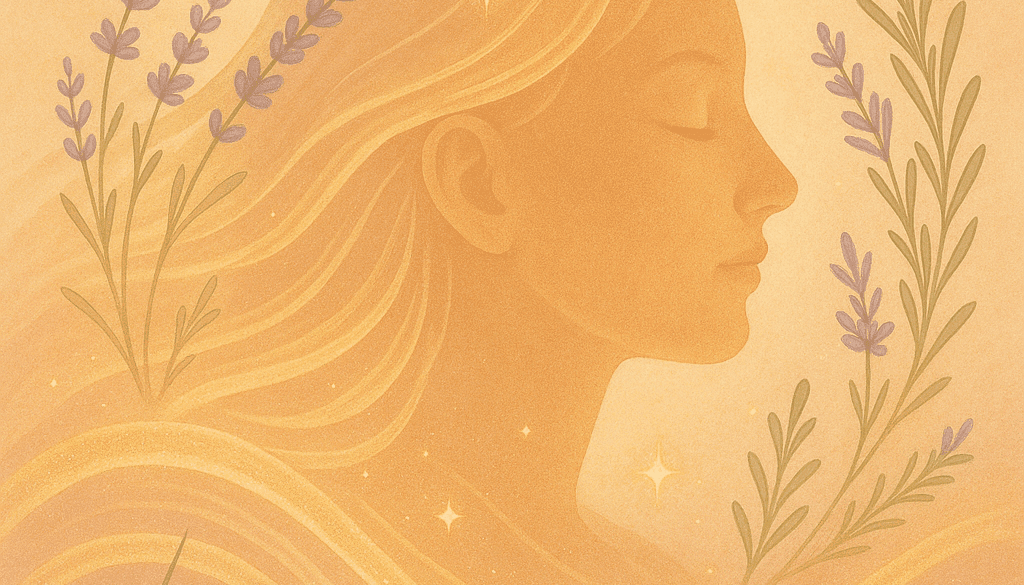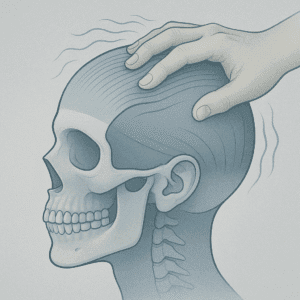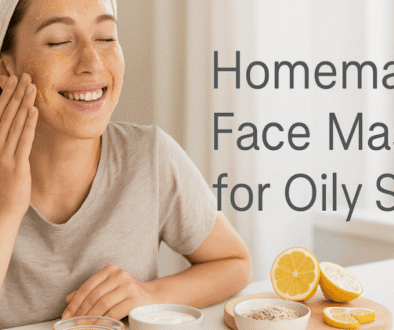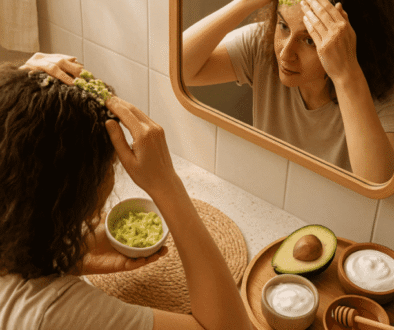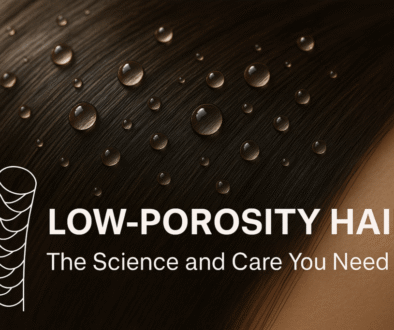Scalp Massage Benefits: Boost Hair Growth & Reduce Stress
Introduction
Scalp massage is simply the act of gently rubbing or kneading the skin on your head, often using your fingertips or a soft brush. It feels amazing, and many people enjoy doing it while showering or after a long day. But it’s not just about relaxation; scalp massage actually brings some real benefits for your hair and scalp health. Research has shown that regular scalp massages can boost blood flow to your head and even make your hair shafts thicker over time. So, giving your scalp a little workout each day could lead to stronger, healthier hair in the long run.
Most experts agree that massaging your scalp is beneficial when done correctly. It’s a low-risk activity for nearly everyone and can be incredibly soothing. It helps to relax tense muscles in your head (kind of like how a neck massage feels great) and can really help reduce stress. In fact, studies indicate that even a quick 15 to 25-minute head massage can lower stress hormones, heart rate, and blood pressure. Plus, it opens up blood vessels (a process known as vasodilation), allowing more blood to reach the hair follicles. Better blood flow means more oxygen and nutrients for each hair root, which is one way massage can promote hair growth.
“A scalp massage can soften and relieve tension in the scalp while improving blood flow,” says medical experts. This means that not only does it feel good, but it also literally enhances circulation in the scalp. Just one massage session can increase blood flow to the scalp by up to 120%, and this boost can last for over 20 minutes after you finish. Over time, this increased circulation can “wake up” sleepy follicles and may lead to healthier, thicker hair.
Scalp massage isn’t just great for your hair; it’s also a wonderful way to boost your overall well-being. It feels amazing because our scalps are filled with nerve endings that react positively to a gentle touch. This can lead to the release of endorphins, those lovely feel-good chemicals—and help ease tension. Many folks discover that regular scalp massages can alleviate headaches and stress. For instance, focusing on the upper neck and head during a massage has been proven to lessen the occurrence of tension headaches. So, a soothing massage can do double duty: it relaxes you while also giving your hair some love!
Benefits of Scalp Massage
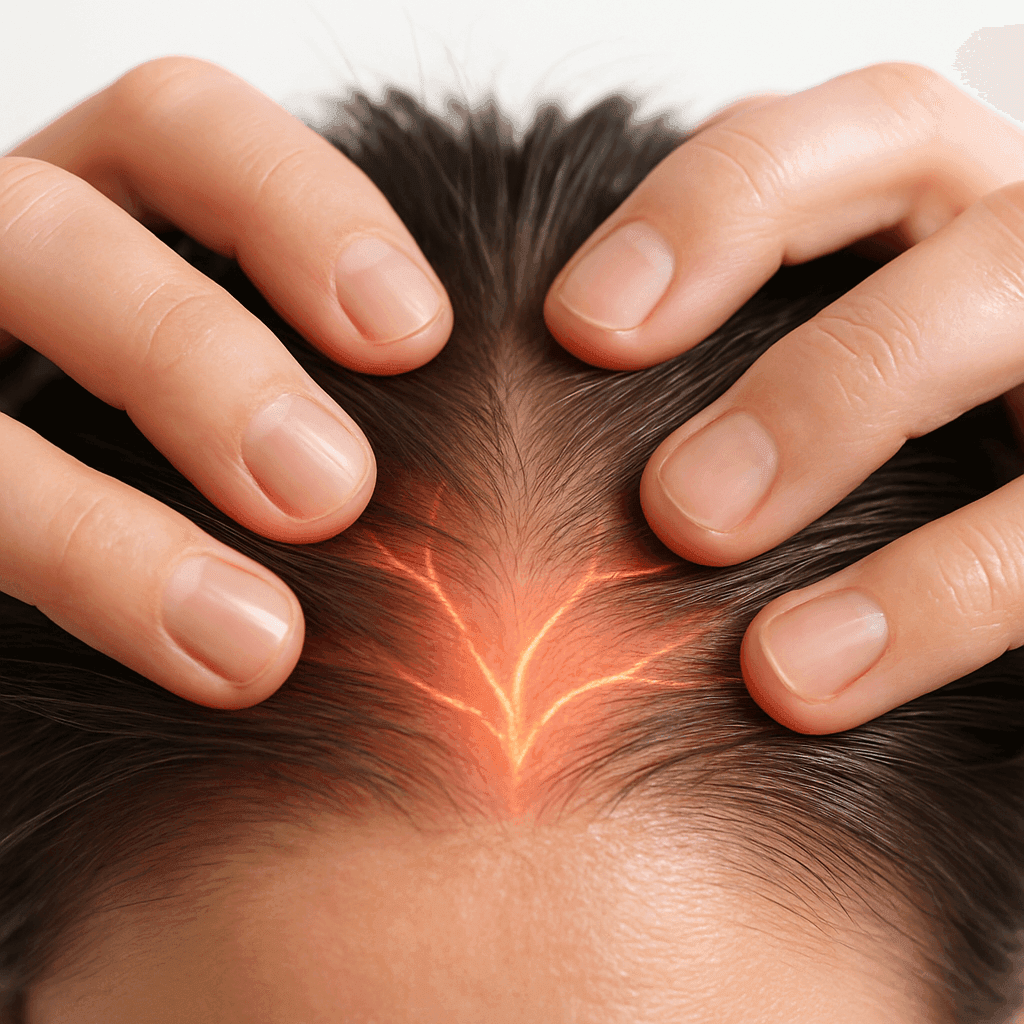
Regularly treating yourself to scalp massages can
offer a bunch of great benefits. Let’s dive into some of the key ones:
- Boosted Blood Flow: As we mentioned, a good massage helps widen the blood vessels in your scalp. This means more oxygen and nutrients reach your hair follicles, promoting stronger hair growth. Plus, it helps clear out any waste that might be hanging around on your scalp.
- Thicker, Fuller Hair: With consistent daily massages over a few months, many people notice their hair looking noticeably thicker. In one study, men who spent just 4 minutes a day massaging their scalps for 6 months ended up with significantly thicker hair. Surveys show that around 70% of folks experiencing hair loss saw real improvements after sticking to a regular scalp massage routine. The massage itself gently stretches the skin, which can encourage hair follicles to become more active.
- Stress Relief: Scalp massages are naturally soothing. They help reduce mental stress by lowering stress hormones and calming your nerves. Since stress can negatively impact hair health (high stress can lead to hair shedding!), this relaxation can help protect your hair in the long run.
- Eases Muscle Tension: The tissues beneath your scalp, like the epicranial aponeurosis, can get tight due to posture or stress. Regular scalp massages gently loosen these tissues, helping to eliminate that “tight helmet” sensation on your head. You might not realize how tight it is until you start massaging or doing scalp exercises—many people report feeling a greater sense of freedom in their scalp movement afterward.
- Cleanses Scalp and Hair: Massaging helps break down oil, dirt, and dead skin on your scalp. For instance, using a soft brush or your fingertips while shampooing not only feels amazing but also helps loosen flakes and residue so they rinse away easily. This can help reduce dandruff and those annoying itchy dry patches. Think of it as a mini-exfoliation for your scalp: washing and gently scrubbing each week keeps your scalp nice and clean.
- May Boost Hair Growth: By stimulating hair follicles and enhancing scalp health, massage could accelerate hair growth. Some users report seeing new hairs emerge in thinning spots after months of consistent massage. (From a scientific perspective, stretching the scalp appears to change gene expression in hair cells, promoting genes related to growth.) While massage won’t change your genetic predisposition (it won’t fix male-pattern baldness), it does seem to help you make the most of your natural hair potential.
- Overall Scalp Health: A well-massaged scalp tends to be healthier. Better circulation keeps the skin on your scalp nourished and hydrated. Plus, massage helps spread your scalp’s natural oils from the roots to the tips, which can strengthen your hair strands. A well-nourished scalp is less prone to dryness or flakiness.
In summary, the benefits of scalp massage generally outweigh the drawbacks for most people. It’s a safe and soothing daily practice that can enhance circulation and scalp health. Just remember to keep your touch gentle to moderate – more on that below.
Potential Downsides and Cautions
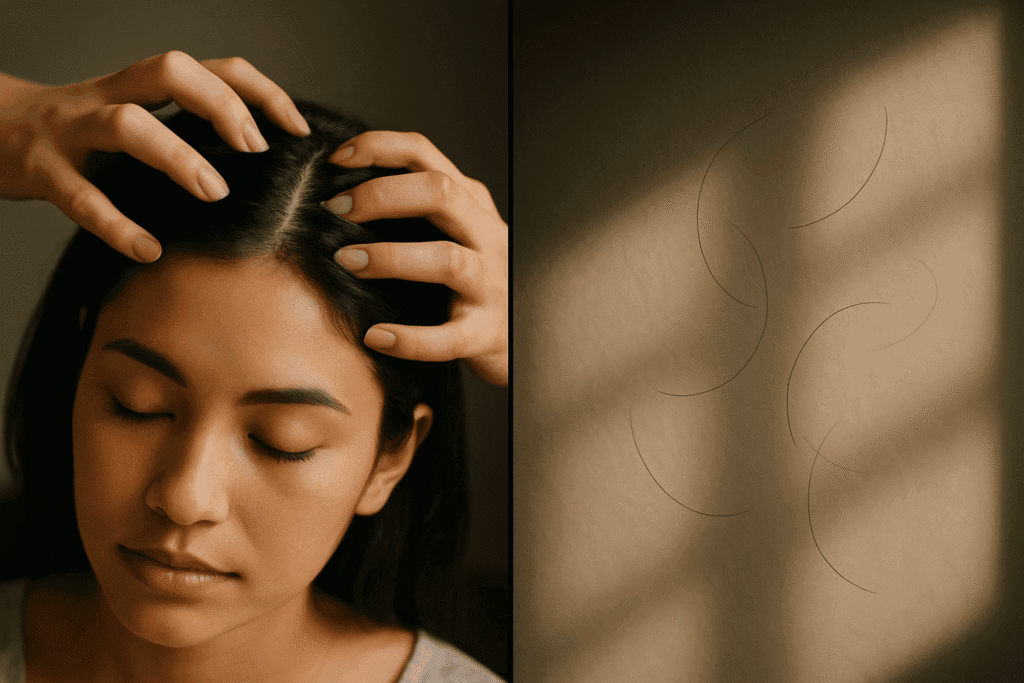
Scalp massage is generally safe, but there are a few important things to keep in mind:
- Temporary Shedding: It might sound a bit odd, but you could see a bit more hair falling out during the first few weeks of starting a massage routine. One study found that people experienced a short-term increase in hair shedding during the initial 12 weeks of daily massages. This is probably because the massage is helping to dislodge hair that was already on its way out. Most of it is just old hair that was going to fall out anyway. After that initial phase, many noticed their hair growing in thicker. So, if you see some hairs coming out, don’t worry—it’s just your scalp making room for healthier new growth.
- Hair Breakage if Too Rough: Be sure to use gentle pressure—no scratching or pulling! Wet hair is particularly delicate. When you’re massaging your hair in the shower with shampoo, keep the pressure light to avoid tugging out strands. If you start to notice breakage (like short, snapped hairs), try easing up on the pressure or cut back on how often you brush or comb vigorously.
- Time Commitment: If you want to see noticeable thickening from scalp massage, be prepared to commit some time—think months. Studies typically involved about 6 months of daily massages lasting 4–10 minutes to see results. It might feel like a big commitment, but if daily feels overwhelming, doing it at least 3–4 times a week can still be beneficial. Treat it more like a relaxing routine rather than an instant solution.
- Irritation or Sensitivity: If your scalp is very sensitive, inflamed, or has any open cuts, it’s best to hold off on massages until it heals. Also, if you have certain conditions (like active cancer, severe psoriasis on the scalp, or uncontrolled epilepsy), it’s a good idea to consult with a doctor first. Some people find that certain oils can cause irritation or allergic reactions, so always do a patch test if you decide to use oils or scrubs.
- Not a Medical Treatment: Keep in mind that scalp massage is a complementary practice. It’s not a cure for serious conditions like alopecia, thyroid issues, or nutritional deficiencies. If you’re experiencing unexplained hair loss or scalp pain, it’s wise to see a doctor. Massage can support a healthy scalp, but it shouldn’t replace professional care when needed.
In summary, disadvantages are minimal. Most people can safely massage their scalp. The main thing is to be consistent yet gentle. If done right, the negatives are just the initial shedding (which is normal) and the effort/time required.
Does Scalp Massage Really Promote Hair Growth?
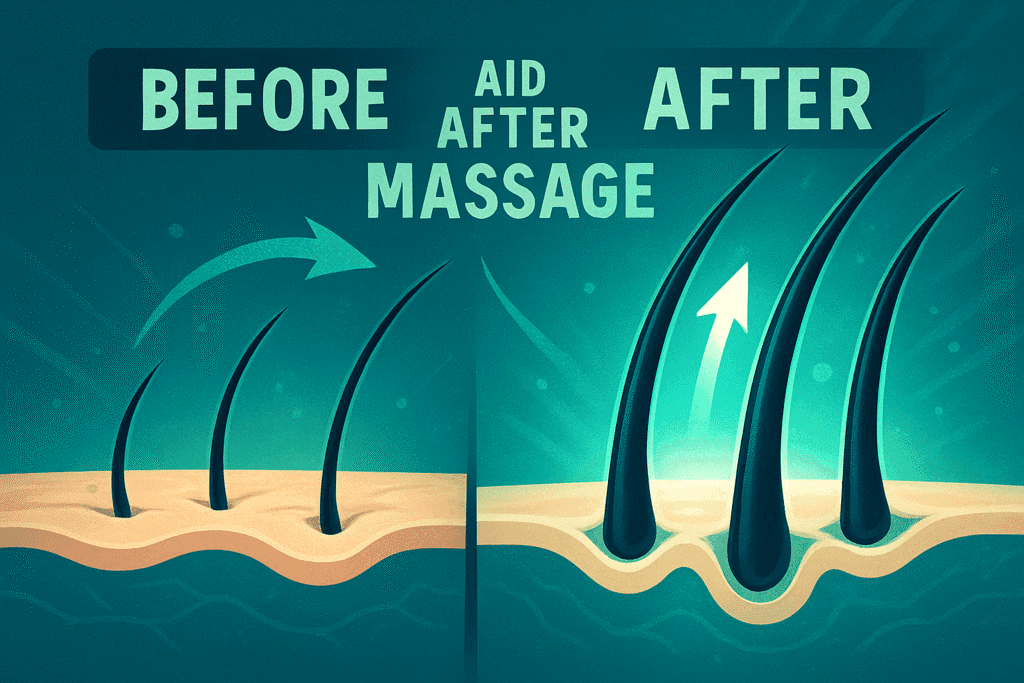
This is one of the biggest questions: Can rubbing your scalp actually help grow more hair? The answer is: it might help, especially when it comes to making your existing hair thicker and healthier, but it’s not a miracle solution. A few small studies have shown some encouraging results:
- In a small 2016 study, nine men received a 4-minute scalp massage every day for 24 weeks. By the end, each man’s hair had noticeably thickened.
- Another study in 2020 focused on women undergoing chemotherapy (who often experience hair loss) and found that those who received scalp massages had “significantly improved” hair regrowth compared to those who didn’t.
- A 2019 survey involving 340 people dealing with hair loss who massaged their scalps twice daily reported that about 69% felt their hair loss had improved.
So, what’s the science behind these findings? It’s believed that massage stretches and stimulates the follicles (the structures at the roots of your hair) in your scalp. This stretching can alter how the cells function. In fact, the 2016 study on men discovered that massage activated (turned on) genes linked to hair growth while deactivating (turned off) genes associated with hair loss in the follicle cells. In simpler terms, the gentle pressure from massage seems to “wake up” dormant hairs.
Plus, better blood flow nourishes hair roots. Just like nails grow with a good blood supply, hair does too. When circulation improves, it may deliver extra nutrients that hair needs. Think of scalp massage as a workout for the skin on your head – it gets the blood flowing.
That said, if hair loss is due to genetics or hormones (like male-pattern baldness), massage won’t completely reverse the underlying cause. It can slow the process and enhance hair quality, but someone who is genetically predisposed to baldness will likely still lose some hair without additional treatments. Consider massage as a way to nourish and stimulate the hair you have, rather than a complete solution for every type of hair loss.
In simple terms, yes, scalp massage can actually help boost hair growth to a certain degree. It can make your hair feel thicker and fuller, especially if you’re dealing with thinning hair due to stress or scalp problems. However, keep in mind that it usually takes some time—often around 3 to 6 months of consistent daily or regular massages—before you start to see any noticeable changes. So, patience really is key!
How Scalp Massage Improves Blood Flow and Scalp Health
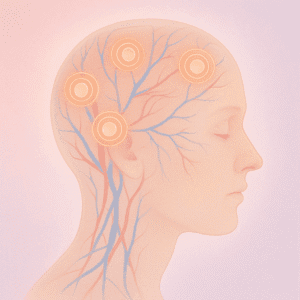
One of the biggest benefits of scalp massage is how it really gets the blood flowing. When you apply pressure and rub your scalp, those tiny blood vessels just beneath the skin start to expand. Here’s what that extra circulation can do for you:
- More Oxygen and Nutrients: Blood is like a delivery service, bringing oxygen and essential nutrients (like sugars and vitamins) to every single cell, including the roots of your hair. With improved circulation, your hair follicles receive a better supply, which can help strengthen them. Some experts even suggest that scalp circulation can increase by over 100% for more than 20 minutes after a good massage.
- Faster Delivery, Faster Growth: Hair grows from follicles that rely on a consistent supply of materials to create keratin, the protein that makes up hair. By massaging your scalp, you ensure that fresh blood regularly reaches those dormant follicles, potentially sparking new growth cycles.
- Scalp Skin Health: Just like your facial skin craves good blood flow to maintain that healthy glow, your scalp skin benefits from it too. Enhanced circulation helps your scalp repair itself, stay hydrated, and shed dead skin cells as it should. Over time, this can help reduce dryness and dandruff.
- Lower Stress Hormones: Research has shown that scalp massage can help lower stress indicators. When cortisol (the stress hormone) levels drop, you’re likely to experience fewer stress-related hair problems. Plus, when your body is relaxed, blood pressure and tension in your blood vessels decrease, leading to even better blood flow.
- Blood Vessel Relaxation: One study found that a head massage lasting 15-25 minutes actually lowered the blood pressure of the women involved. The researchers believe this happens because the massage “relaxes blood vessels” and the muscles in the neck. So, not only does massage boost blood flow to the scalp, but it can also enhance overall circulation in the head and neck area.
In short, the increased blood flow from scalp massage provides your scalp and hair with exactly what they need to thrive. It’s like giving your head a gentle wake-up call every day.
How to Give Yourself a Scalp Massage (DIY Techniques)
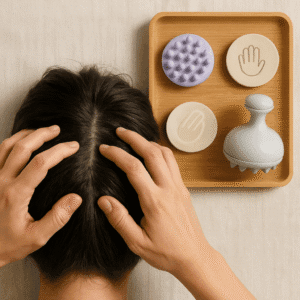
The beauty of scalp massage is that you can easily do it right at home, whenever you want. No need for fancy tools! Here are some handy tips and techniques to help you get the most out of it:
Tools vs. Fingers
- Fingertips: Your own hands are the ultimate “tools.” Use the pads of your fingers (not your nails) to explore your scalp. Just place all your fingertips on your scalp and gently press and rub in small circles. This is what we call the traditional scalp massage. It’s straightforward and really effective.
- Massage Brushes or Tools: If your hands start to feel tired or you’re looking for a different sensation, you can try a silicone brush (like a scalp scrub brush) or an electric scalp massager. These brushes usually have soft rubber bristles on a round pad, making it easy to cover your entire scalp, and they feel different. (Many people find them quite relaxing.) They’re especially useful if you struggle to reach the back of your head.
- When using a brush or device, remember to apply gentle pressure – there’s no need to press hard. Move the brush in circles or slow sweeps. The aim is to stimulate, not to be aggressive.
- Shower Massager: There are small handheld brushes designed for shampooing your hair. According to the hairclub blog, shampoo brushes not only stimulate the scalp but also help loosen dead skin and product buildup while you wash. They’re perfect if you enjoy giving your scalp a little massage during shampooing. They look like rubber scalp scrubbers.
In summary, you don’t need any tools at all, but using them can add some variety and extra stimulation if that’s what you’re after.
Wet or Dry?
You can give your scalp a massage either on dry hair or while washing it (when it’s wet), depending on what you like best.
- Dry Scalp Massage: This can be done anytime – perhaps in the morning after you wake up or while you’re relaxing in front of the TV. When your hair is dry, you can apply a bit more pressure since the strands aren’t getting pulled.
- Wet Scalp Massage (in the Shower): This is often easier to do while you’re in the shower or bath. Just lather up some shampoo or conditioner on your scalp, and then massage as you normally would. The product helps your fingers glide smoothly. One important tip: use less pressure on wet hair. Wet hair is more fragile, so focus on gentle strokes and soft rubbing instead of heavy kneading. Aim for about 5 minutes of light massage while you shampoo. It makes your shower time more enjoyable and effective.
Regardless of the method, always keep your motions gentle. Scrubbing too hard can irritate or even damage your hair. You can also Read about Nourishing Your Dry Hair: The Ultimate Guide to DIY Hair Masks.
Pressure and Duration
- Pressure: Go for light to medium pressure. It should feel like a firm touch that’s comfortable – not painful. If your scalp starts to hurt or your fingers feel strained, ease up a bit.
- Movements: Use small, circular motions. Picture yourself drawing tiny circles with each fingertip. Start at the top of your head and gradually work your way to the sides, front, and back. Make sure to cover your entire scalp. You can also try kneading (gently pinching and releasing the skin between your fingers) and tapping (light, drum-like taps with your fingertips).
- Time: Experts usually suggest 5–10 minutes per session for the best results. Some even recommend going up to 20 minutes if you’re enjoying it. But remember, even a few minutes is better than nothing! If you can, try to do it twice a day (morning and night). Studies show that daily massages twice a day provide the best benefits for your hair. If that’s not possible, aim for at least every other day or a few times a week. Consistency over time is more important than having one long session every now and then.
When to Do It: You can really do this anytime – whether you’re snuggled up in bed before sleep, sitting at the kitchen table, or even while rinsing out shampoo in the shower. Many folks find it to be a wonderfully relaxing ritual to wind down before bedtime.
Directions and Techniques
Feel free to mix things up with different techniques to keep it fresh and cover all areas. Here are some suggestions:
- Circular Strokes: With your fingertips, make small circles starting from your forehead and moving back toward your neck and ears.
- Kneading: Place your fingertips on a specific spot (like the side of your head) and gently squeeze or roll the skin a bit before moving on.
- Tapping or Drumming: Lightly tap your scalp all over with your fingertips. This can really wake up those nerves!
- Raking: A super gentle way to run your fingers through your hair: slide your fingers from the back of your head to your forehead (or the other way around) to lightly feel your scalp. It’s like combing, but without a comb.
- Neck and Temples: Don’t forget about the base of your skull and your temples. You can give those areas a rub too. The base of the skull is a common stress spot, so some gentle kneading there can really help relieve tension.
The key is to be thorough but gentle. Make sure to cover every part of your scalp, but if any area feels sore, take a break.
Using Oils or Products (Optional)
Since you’re looking for DIY techniques, we’ll steer clear of pushing products. But just a quick note on oils: Some people enjoy adding a drop of natural oil (like coconut, jojoba, or olive) to their scalp massage. Oils can make the massage smoother and add some extra conditioning. If you decide to try this:
- Just use 1–2 drops on your scalp, then spread it with your fingers.
- Always do a patch test with a new oil on a small area of skin to check for irritation.
- Keep in mind that oils can make your hair feel greasy, so you’ll probably want to wash it afterward.
Other additives: Essential oils like peppermint or rosemary are sometimes mixed with carrier oils (like coconut oil) for a nice scent and potential growth benefits. But since we’re skipping product promotions, just remember: a tiny amount of a mild
How Often and How Long to Massage
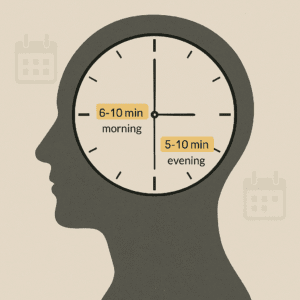
Consistency is crucial when it comes to scalp massages. Most experts and studies suggest you should aim for daily sessions or at least a few times a week if you want to reap the benefits for your hair. For instance, Health.com recommends 10–20 minutes once or twice a day as the sweet spot. The HairClub blog even suggests 3–4 times a week for optimal results, with daily sessions being even better if you can swing it.
That said, pay attention to your scalp. If you find that daily massages leave your scalp feeling irritated or sore, it’s a good idea to dial back the frequency or lighten the pressure. Even just 5 minutes every other day can do wonders for relaxation and circulation. The key is to make it a regular part of your routine.
Think of scalp massage like brushing your teeth: it’s all about consistent, gentle care. Over time (we’re talking several months here), you might notice your hair looking shinier and bouncier, or perhaps feeling less dry. Just keep in mind that hair grows slowly—about 1 cm per month on average—so don’t expect instant results.
Is It Normal to Lose Hair After a Massage?
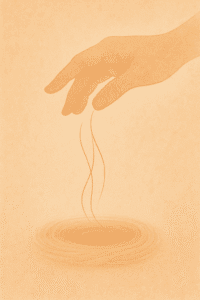
When you start massaging your scalp, you might find yourself asking, “Why am I seeing more hair on my fingers or in the shower drain?” This is a totally normal concern, so let’s set the record straight:
Your hair naturally sheds about 50–100 strands a day as part of its life cycle. Many of those loose hairs are already nearing the end of their lifespan. A gentle massage can help those hairs come out a bit quicker. It might seem like you’re losing a lot all at once, but chances are, you’re just noticing the hair that was going to fall out anyway.
As one expert pointed out, a temporary increase in shedding was actually observed in people who did daily scalp massages during a study. But here’s the good news: this was followed by thicker hair and no long-term hair loss. In simple terms: a little initial shedding is normal and usually nothing to worry about.
However, if you start seeing large clumps of hair or if the shedding becomes excessive and continues for months, that could indicate a condition like telogen effluvium or another hair loss issue—not just the massage. If you notice patchy bald spots or an unusual amount of hair loss that persists, it’s wise to consult a doctor.
To put younger readers at ease: don’t freak out if you notice a few extra hairs after a massage session. There’s a study that dives into hair growth cycles, explaining that hair goes through different phases—growth, rest, and shedding. When you massage your scalp, it can help some of those resting hairs make their way out. In just a few weeks, those follicles can start sprouting new hairs in their place.
Many massage enthusiasts claim that after a couple of months, shedding actually decreases because the scalp becomes healthier. The secret? Consistency and a gentle touch.
Timeline: When Will I See Results?
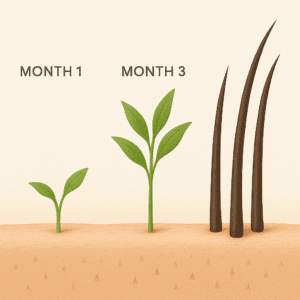
Patience is key. Your hair grows at a pretty slow rate—about 1 cm or half an inch each month. Most experts who study scalp massage suggest that you’ll need several months of regular practice to notice any visible changes in hair thickness or growth.
In clinical studies, participants often massaged their scalps daily for 24 weeks (that’s about 6 months) before any measurements were taken. Some even noticed improvements earlier, around the 12-week mark, in hair thickness, but it’s best to plan for a timeline of 3–6 months.
If your goal is simply to relax and promote scalp health, you’ll feel the benefits—like reduced tension and a lovely sensation—right after each session. But if you’re aiming for a boost in hair appearance (think shininess and fullness), give it some time. Stick with the routine. You might start to notice softer hair or a healthier scalp after a few weeks, but that real “wow, my hair looks thicker!” moment might not hit until around 3–6 months.
And remember, everyone’s hair grows at different rates due to genetics and overall health. Enjoy scalp massage as a healthy habit, and over time, it could reward you with stronger hair and a happier scalp.
Lifestyle Tips to Boost Scalp Health
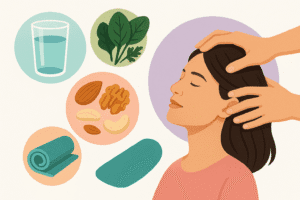
Scalp massage is a fantastic way to promote healthy hair, but it really shines when paired with other good habits:
- Stay Hydrated: Keeping yourself well-hydrated is crucial. While dehydration might not directly lead to baldness, even mild dehydration can limit blood flow to your skin and scalp. Water plays a key role in delivering nutrients to your hair follicles and keeping your scalp skin nice and flexible. Aim for around 8 cups of water each day (more if you’re active). Your hair craves hydration just like the rest of your body!
- Eat Nutrient-Rich Foods: Your hair is primarily made of protein (keratin), so it’s important to get enough protein in your diet—think meat, eggs, and beans. Plus, vitamins and minerals are essential for keeping your hair strong. Iron, vitamin D, B-vitamins, zinc, and omega-3 fatty acids are particularly beneficial. Incorporate plenty of fruits, veggies, whole grains, and nuts into your meals to support hair growth. In a nutshell, a balanced diet ensures your scalp gets all the nutrients it needs. For instance, a lack of iron can lead to thinning hair, so don’t forget to include leafy greens or fortified cereals.
- Manage Stress: Since stress can lead to hair shedding, try combining scalp massages with other stress-relief techniques. Good sleep, regular exercise, or meditation can help keep your stress levels in check. The more relaxed you are, the better your body can focus on growing healthy hair. And remember, one of the great benefits of massage is that it helps relieve stress too!
- Gentle Hair Care: Be careful not to wash your hair too often, as this can strip away its natural oils. Opt for mild shampoos and conditioners. When it comes to detangling, be gentle—avoid yanking or brushing too hard, especially when your hair is wet. Don’t forget that your scalp’s health is important too: steer clear of picking at it or using harsh chemicals directly on your skin.
- Protect Your Scalp: Too much sun exposure can harm your scalp skin, so wearing a hat in strong sunlight is a smart move. If your hair is thin, consider using scalp sunscreen. Keep your scalp clean, but don’t go overboard with exfoliating or scrubbing every day—once a week is usually sufficient for most people.
- You can also check our Article on The Best Natural Hair Care Routine to Boost Growth & Shine.
How to Exfoliate Your Scalp
Taking care of your scalp is just as important as caring for your face, and exfoliation is a great way to do it! Just like your skin, your scalp sheds old skin cells. Sometimes, this dead skin can pile up—think dandruff or those annoying flaky bits—and even clog your hair follicles. A gentle exfoliation can really help with that.
You definitely don’t need to exfoliate every day; doing it 1–2 times a week is more than enough. Here’s a straightforward DIY exfoliation routine you can try:
- Wet Your Hair and Scalp: The best time to do this is in the shower. Start by shampooing your hair and rinsing it out, or just make sure your hair is thoroughly wet.
- Apply a Gentle Scrub: You can use your fingertips with a little bit of shampoo as a scrub. If you prefer, whip up a homemade scrub by mixing a teaspoon of sugar or fine salt with some conditioner or yogurt.
- Massage in Circles: Gently work the scrub (or shampoo) into your scalp using circular motions. Avoid scratching too hard; just enjoy the feeling of the grainy texture working its magic. Pay extra attention to areas that feel oily or flaky.
- Rinse Well: Make sure to rinse out all the scrub or shampoo completely. After that, condition your hair as you normally would (just apply the conditioner to your ends after rinsing out the scrub).
Tips: If you’re dealing with a lot of oil buildup or dandruff, a chemical exfoliant can be helpful too—salicylic acid shampoos are a good example. Just remember to be gentle; over-exfoliating can dry out your scalp, which might lead it to produce even more oil as a response.
In the end, scalp exfoliation helps remove excess oil and dead skin cells, leaving your hair looking cleaner and fuller. Healthline points out that exfoliating your scalp is like giving your skin a refreshing boost—it’s especially beneficial if you struggle with dandruff, a dry scalp, or very oily hair.
Keep in mind: Exfoliation is different from massage. You can mix a gentle exfoliating scrub with a massaging motion once or twice a week. On other days, just enjoy a smooth, relaxing massage without the scrub.
Relaxing Tight Scalp Muscles
Some folks mention experiencing a “tight scalp.” It often feels like the skin on your scalp is stiff or as if you’re wearing a helmet. This sensation can arise from stress or bad posture, and it might even lead to tension headaches.
One effective way to release those tight muscles and tissues is through massage. According to a cosmetic anatomy blog, the scalp has a tough layer called the epicranial aponeurosis, which can become rigid over time. Regular, gentle massage can really help ease that tension.
You might also want to try a simple scalp-stretch exercise:
- “Scalp Test”: See if you can lift or move the skin on the top of your head with your fingers. If it hardly budges, you’ve got tight scalp tissue. But if you can lift it well (and your hair moves up and down), your scalp is likely more relaxed.
- Scalp Exercises: With your fingers, gently slide the skin of your scalp back and forth or from front to back. You can also hold a small section of hair and gently pull to stretch the scalp skin. Some people find it helpful to rotate their head and move the scalp around, but always remember to be gentle!
- Massage to Loosen: Focus your massage on areas that feel tight—usually the crown of your head, the temples, and the base of your skull. Spend a little extra time kneading those spots.
When your scalp relaxes, you might notice an overall sense of well-being. Just like stretching your back muscles feels great after a long day of sitting, loosening the muscles in your head can help alleviate headaches and boost circulation.
Wrapping Up: A Healthy Habit for Strong Hair
Scalp massage is a simple and cost-free way to nurture both your hair and your mind. Think of it like planting seeds: just a little effort each day can lead to amazing results.
Here’s a quick recap of the main points:
- Absolutely, scalp massage is beneficial for most folks. It enhances blood circulation, helps you unwind, and can even promote thicker hair.
- Be gentle. Use a light touch and don’t go overboard.
- Stick to a routine: Try to spend a few minutes on it daily or at least several times a week.
- Be patient for results: It might take 3–6 months to notice changes in your hair, but you’ll feel the relaxation benefits right away.
- Maintain your health: Stay hydrated, eat nutritious foods, and take care of your scalp skin to maximize the benefits of your massage routine.
- Don’t worry about normal shedding: If you notice some hair coming out during your massage, it’s usually just the normal shedding process.
- Enjoy the process: Scalp massage is safe to do at home, and it’s a great excuse to treat yourself to a little spa time.
By pairing gentle massage with good scalp care (like occasional exfoliation, a clean diet, and staying hydrated), you’re giving your hair the best chance to thrive. A little “head rub” can make a big difference for healthier, happier hair and scalp.
Sources: We based this on recent research and expert insights (Healthline, scientific studies, dermatology resources) to illustrate how scalp massage impacts hair and skin. The science behind improved blood flow, changes in hair cell genes, and clinical evidence of thicker hair all back up the benefits discussed. Just remember to listen to your own body and do what feels right for your scalp!
